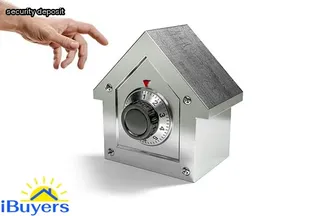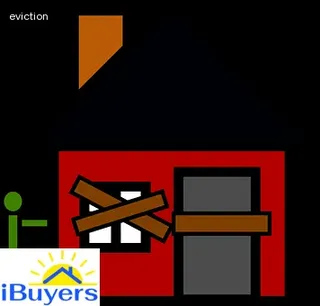When it comes to protecting your Oregon property from tenant damage, landlords need to understand the difference between normal wear and tear and actual property damage. Normal wear and tear is any deterioration that naturally occurs over time due to everyday living.
This could include worn carpets, scratched doors, or faded paint. Property damage, on the other hand, is any destruction caused by tenants beyond the scope of normal usage.
Examples of this could be broken windows, missing fixtures, or destroyed furniture. It's important for landlords to be able to recognize the difference so they can accurately assess what needs repair when tenants move out.
With knowledge of these distinctions and a good tenant screening process in place, landlords can feel more confident in their ability to protect their rental properties from tenant-related damages.

Navigating Oregon property law can be a complicated process, especially for landlords and tenants who are unfamiliar with the legal landscape. In some cases, landlords may not have the right to make certain decisions or take certain actions when it comes to protecting their property from tenant damage.
It is essential that both parties understand the implications of Oregon property law before entering into contracts or agreements related to rental properties. Landlords need to be aware of their rights, as well as any applicable regulations and laws that could affect how they manage their rental units.
Tenants also need to understand what is expected of them in terms of taking care of the property and ensuring it is kept in good condition. With a clear understanding of these legal concepts, landlords and tenants can work together to ensure that all parties are protected and that the rental property remains safe and secure.
Landlords should consider utilizing professional assistance when attempting to resolve damage disputes with tenants. Resolving tenant disputes can be a difficult and time consuming process that requires knowledge of local laws and regulations.
Utilizing professional assistance can help landlords protect their property while ensuring they remain compliant with all applicable laws. Professional assistance can come in the form of attorneys, mediators, or arbitration services.
Attorneys are best suited for complex cases that require legal action, while mediators and arbitration services are better used to resolve smaller issues without having to go through the court system. Additionally, professional assistance is beneficial in providing guidance on how to prevent future damage by establishing clear rules and expectations upfront with tenants.
Ultimately, by utilizing professional assistance landlords can minimize the time and effort they must dedicate to resolving tenant damage disputes while protecting their property from further damage.

When faced with property damage in Washington and Oregon, landlords should take proactive steps to protect their investment. The first step is to create a tenant agreement that outlines the expectations of both landlord and tenant, including who will be responsible for any damages that occur during the tenancy.
This should include details on how the damage will be addressed and what action the landlord can take if it is not paid for by the tenant. Additionally, landlords should consider purchasing renter's insurance, which would cover costs associated with any damage that occurs on the rented property.
Furthermore, landlords should inspect their rental properties regularly to identify any existing damages or potential issues before they become a problem. Finally, when tenants do cause damage to rental properties, landlords should take swift action to repair or replace damaged items as quickly as possible in order to prevent further damage from occurring.
Taking these steps will help ensure that landlords are adequately protecting their investments while also meeting their responsibilities under state law.
Painting and carpet replacement are two of the most common ways landlords can protect their Oregon property from tenant damage. It is important for landlords to understand how painting and carpet replacement can impact the normal wear and tear on a rental unit.
Regular inspections can help identify areas in need of painting or new carpets, which will ultimately help minimize any potential damages that could occur during a tenant's lease. With more thorough inspections, it is possible to better recognize when painting or carpet replacement is necessary in order to protect the property and maintain its condition.
Landlords should be aware of the signs to look for when evaluating whether or not painting or replacing carpets is needed, as these steps can significantly reduce the amount of damages that may happen during a tenancy agreement.

Portland Oregon is an excellent location for landlords to invest in rental real estate due to the city's consistently strong economy, steady population growth, and attractive climate. Purchasing a rental property in Portland offers the potential for a steady income stream, tax benefits, and long-term capital gains.
Additionally, owning rental real estate gives landlords control over their investment, enabling them to decide who will live in their rental unit, as well as set the terms of tenancy agreements. Furthermore, by protecting their Oregon property from tenant damage with effective screening processes and clear rules about resident responsibilities, landlords can help ensure that their investments will remain valuable assets for years to come.
Effective management strategies also enable landlords to maximize their return on investment by keeping vacancies low and rents competitive in the market. With all of these advantages combined, owning rental real estate in Portland Oregon is a great opportunity for those seeking financial security and long-term wealth building.
As a landlord, it is important to know your rights when it comes to tenant-caused property damage. It is essential to protect your Oregon property from potential damage by understanding the state’s tenant-landlord laws and creating an effective action plan.
When writing a lease agreement, make sure to include a clause that specifies the tenant’s responsibility for damages as well as any security deposits that must be paid. In addition, conduct regular walkthroughs of the property and document any existing damages so you can easily identify any new damages caused by the tenant.
If necessary, take action against tenants who are negligent in protecting your property from damage. By knowing your rights and taking proactive steps to monitor and protect your Oregon property from tenant-caused damage, you can ensure that you remain in compliance with all applicable laws while also protecting your valuable investment.

In Oregon, landlords must be aware of the legal limitations regarding tenant liability for damages. It is important to understand that while a landlord may require tenants to pay for damages they cause, it cannot go beyond the restrictions established in state law.
Landlords are not permitted to create lease agreements that require tenants to pay more than their actual share of the repair costs or waive any rights granted by Oregon legislation. Any clauses that attempt to do so are considered void and unenforceable.
Before entering into a rental agreement, landlords should review all applicable laws related to tenant liability for damage and consult an attorney if necessary. Additionally, landlords must remain vigilant in ensuring that their properties are maintained and inspected regularly in order to minimize potential damage from tenants.
When it comes to protecting Oregon property from tenant damage, landlords must understand the difference between necessary repairs and unnecessary maintenance costs due to normal wear and tear. It's important for landlords to be aware of the scope of their obligations and the rights of their tenants.
Necessary repairs are those that keep the premises livable, such as fixing a broken window or repairing a leaky roof. Unnecessary maintenance costs are those that arise from daily use, such as cleaning carpets or painting walls after a tenant moves out.
Landlords should also be mindful of Oregon state laws that protect tenants from some forms of damages; for example, if a landlord fails to repair an item within a reasonable amount of time, they may be liable for any resulting damages sustained by their tenant. As such, it is essential for landlords to have policies in place that make clear which types of repairs and maintenance they will cover and which they expect tenants to pay for themselves.

When it comes to protecting Oregon property from tenant damage, it is important for landlords to understand the common sources of damage in residential rentals. This includes damages caused by tenant negligence, inappropriate use of the property, or accidental damage that can occur.
As a landlord, familiarizing yourself with these potential issues will help you develop strategies to avoid them in the future. For example, performing regular maintenance checks and keeping an eye out for signs of wear and tear could alert you to potential issues before they become major problems.
Additionally, educating tenants on proper care and use of your property is essential when it comes to avoiding damages caused by misuse. Establishing clear rules and expectations early on will help ensure that any damages that do occur are minimized or avoided altogether.
When it comes to protecting property from tenant damage, there are a variety of strategies landlords can consider. Screening potential tenants is one of the most important steps in minimizing or preventing property damage.
Creating a thorough application process that includes credit checks and references can help identify applicants who have a history of damaging rental properties. Landlords should also consider requiring higher security deposits to cover any damages that may occur during the tenancy.
Additionally, establishing clear rules for tenant behavior and making sure tenants understand their responsibilities when it comes to protecting the property can be beneficial. Establishing regular maintenance schedules and inspections can also help minimize potential damages before they become costly repairs.
Finally, providing renters with guidance on how to properly care for rental properties can help reduce the chances of accidental or intentional damage occurring while they are living there.

As a landlord, properly inspecting your rental property on a regular basis is essential for protecting your investment and ensuring that tenants are abiding by their lease agreement. Establishing reasonable standards for conducting inspections of rented properties is key to maintaining the safety and condition of the property.
Inspections should be conducted in a timely manner, ensuring that potential damage or violations of the lease can be detected early on. When conducting inspections, landlords should take note of any existing damage, as well as any new damage that could have occurred since the last inspection.
Landlords should also ensure that all necessary repairs are made in a timely manner, as this will help protect against further damage to the property. Furthermore, it is important to document each inspection and keep records of any issues or damages discovered during an inspection.
Following these guidelines can help landlords protect their Oregon property from tenant damage and maintain a safe living environment for all parties involved.
Documenting evidence of property damage is a critical step for protecting Oregon property from tenant damage. Landlords must assess the most effective methods for verifying the condition of rental units both before and after tenancy.
A thorough inspection can help landlords create a baseline from which to compare any later discrepancies, as well as establish a timeline for when damages may have occurred. Photographs and videos can provide visual records that are useful in cases of disagreement or dispute, while written documentation such as move-in/move-out checklists and signed statements can also be beneficial.
Additionally, using third-party services such as home repair or cleaning companies further bolster the accuracy of evidence since an independent contractor has evaluated the condition of the property prior to occupancy. By carefully evaluating approaches to documenting evidence of property damage, landlords in Oregon can ensure that their investments are protected against tenant damage and remain in good condition to attract future tenants.

When it comes to protecting Oregon property from tenant damage, local ordinances have a big impact on the requirements for what constitutes normal wear and tear. Landlords should be aware of their rights and responsibilities under Oregon law, as well as any additional requirements imposed by local ordinances in their area.
In some cases, local ordinances may impose stricter requirements on landlords than those of state law. For example, some cities may require landlords to accept greater responsibility for repairs due to “normal wear and tear” than Oregon law requires.
It is important to understand these differences in order to protect yourself from potential liability or legal challenges from tenants. Additionally, understanding the difference between normal wear and tear and damage caused by tenants can help you avoid costly disputes with tenants who might try to claim that damages were due to normal wear and tear instead of tenant-inflicted damage.
Knowing the local rules and regulations can help landlords protect their properties while still providing fair terms for their tenants.
When it comes to protecting Oregon property from tenant damage, insurance is a landlord's best bet against unexpected losses. There are a variety of options available that can help protect both landlords and tenants from financial hardship.
Liability insurance can cover any legal costs, such as those associated with accidents or injury that occur on the premises. Property damage insurance can provide coverage for lost or damaged items due to tenant negligence, such as fires, flooding, or theft.
It's important for landlords to assess their own unique needs before selecting an appropriate policy. They should also be sure to read the fine print on any policy they choose, so they know what kind of coverage they are getting and the limitations associated with it.
In addition, it's beneficial for landlords to shop around and compare quotes from different insurers to make sure they're getting the best deal possible. With the right coverage in place, landlords can rest assured knowing their property is protected in case of tenant damage.

When it comes to protecting Oregon property from tenant damage, landlords must understand the tax implications of normal wear and tear vs repair costs. Generally, repairs or replacements due to normal wear and tear are not deductible; however, those resulting from actual damage caused by a tenant may be.
Landlords should keep track of all repair costs related to tenant damage so they can claim them as deductions on their taxes. Additionally, landlords in Oregon should be aware of the state's security deposit law which limits security deposits to one month's rent and requires that deposits be returned within 31 days of termination of tenancy.
Understanding tax implications is an essential part of protecting both landlord and tenant interests when it comes to property damage in Oregon.
When it comes to protecting Oregon property from tenant damage, landlords have a difficult job. One of the biggest challenges is dealing with difficult tenants who cause excessive property damage.
Investigating potential solutions for this problem can be tricky, and requires an understanding of both state laws and the rights and responsibilities of tenants. Landlords should start by familiarizing themselves with Oregon security deposit laws so they understand what their rights are when it comes to collecting money from tenants for damages.
Landlords can also use a variety of methods to screen potential tenants before signing a lease, such as verifying references and conducting background checks. Finally, landlords should make sure that their rental agreement is clear about expectations regarding tenant behavior and any penalties for causing property damage.
If a landlord does need to evict a tenant due to excessive property damage, they must abide by the state’s eviction procedures to ensure that the process follows all applicable laws. Taking proactive steps like these can help landlords protect their Oregon property from tenant damage while staying compliant with state law.

When it comes to protecting Oregon property from tenant damage, landlords must not only understand the laws that govern the rental agreement but also be familiar with best practices when it comes to handling civil suits related to the damages caused by tenants. It is essential for landlords to have a clear understanding of their legal rights and obligations as a property owner in order to effectively handle any potential disputes with tenants.
It is important for landlords to document any damages caused by tenants and take photos of any destroyed or damaged property as evidence. Additionally, obtaining written statements from witnesses can be an invaluable tool if a civil suit arises.
Landlords should also consider implementing preventative steps such as requiring tenants to provide security deposits and insurance policies prior to signing a lease agreement. Furthermore, managing expectations on both sides is key for avoiding any misunderstandings about the terms of the lease agreement.
Finally, depending on the situation, it may be wise for landlords to consult an attorney or mediator who specializes in landlord-tenant law in order to ensure that their rights are protected and all applicable laws are followed throughout the course of a dispute resolution process.
As a landlord in Oregon, it is important to be aware of the tax implications associated with repairing tenant damage versus normal wear and tear. Repair costs incurred as a result of tenant damage are typically deductible from taxable income, while expenses associated with normal wear and tear must be taken as a non-deductible expense.
Additionally, repairs due to tenant negligence or destruction are considered rental income losses and can be deducted from taxes. It is also important to note that repairs resulting from normal wear and tear may not be tax deductible if they fall under the realm of capital improvements.
This means that any repairs made which improve the value of the property will not qualify for a deduction but will instead increase the value of the rental property for tax purposes. Lastly, landlords should keep detailed records of all repair costs in order to ensure proper deduction qualification when filing taxes at year-end.

As a landlord of rental property in Oregon, it is important to know the financial penalties associated with not addressing tenant damage to the property promptly. Landlords must take action right away if any damage occurs to protect their finances and ensure the safety of their tenants.
The first step is understanding state laws that outline the different types of damages that fall under a landlord’s responsibility. In some cases, landlords may be financially liable for damages caused by tenants, such as repairs needed due to water or fire damage, or even replacing items stolen from the property.
It is also important to understand when tenants are responsible for damages and how much they need to pay for them. Determining who is responsible for what and how much each party should pay in the event of damage can help landlords save money and avoid costly legal battles.
Penalties associated with failing to address tenant damage in a timely manner can range from fines imposed by local governments to higher insurance premiums due to negligence on behalf of the landlord. Taking proactive steps such as conducting regular inspections of rental property and having clear communication with tenants about expectations can help landlords prevent tenant damages before they occur and avoid potential financial penalties down the road.
In Oregon, landlords have the right to charge tenants for any damages caused to their property beyond regular wear and tear. The amount that a landlord can charge depends on several factors, including the extent of the damage, the cost of repair or replacement, and the type of property damaged.
For example, if a tenant causes damage to a wall or floor that requires extensive repairs, then the landlord may be able to charge for all necessary repairs. On the other hand, if a tenant damages furniture or appliances that are easily replaceable, then the landlord may only be able to charge for replacement costs.
Landlords should consult their local laws and regulations in order to ensure they are making appropriate charges for any damages caused by tenants. Additionally, landlords should clearly outline their expectations regarding tenant damage and what kind of penalties may be enforced in their rental agreement.
By taking these precautions, landlords can protect themselves from excessive liability when it comes to tenant damage in Oregon.

In Oregon, a landlord is allowed to charge a former tenant for damages up to one year after the move-out date. A tenant can be held liable for any damage done to the property that exceeds normal "wear and tear.
" Landlords are encouraged to document the condition of the rental unit upon move-in and take pictures or videos of any damage caused by the tenant during their tenancy. If a landlord believes that they have incurred financial loss due to tenant-caused damage, they should notify their former tenant in writing within 30 days of the move-out date.
The landlord must also provide an itemized list of damages and receipts for repair/replacement costs within one year from the move-out date. It is important for landlords to keep track of all documents related to damage claims so that they can prove their case if it goes to court.
Normal wear and tear of a rental in Oregon is defined as the deterioration of the property caused by everyday use. This includes fading, chipping, and scratching on walls, floors, fixtures, and appliances that occurs over time due to normal living in the rental.
It also includes minor plumbing leaks or drips from faucets and toilets, which are considered normal wear and tear since they happen gradually and do not require major repairs. Landlords should be aware that normal wear and tear does not include damage caused by negligence or intentional destruction of the property by tenants.
To protect their Oregon properties from tenant damage, landlords should conduct regular inspections of their rentals to identify any potential issues before they become more serious.
Carpet is one of the most common types of floor coverings used in Oregon rental properties and landlords must be aware of their legal obligations when it comes to replacing it. In Oregon, landlords must replace carpets if they become excessively worn or damaged due to tenant negligence.
Depending on the severity of the damage, carpet replacement may need to occur more frequently than expected. In general, Oregon landlords should check the condition of the carpet during move-out inspections and make any necessary repairs or replacements promptly in order to protect their property from further damage.
Furthermore, landlord should inspect carpets throughout the duration of a tenant's lease in order to ensure that any damages are addressed as soon as possible. By following these steps, Oregon landlords can better protect their investment and avoid costly repairs due to tenant negligence.